Fasting-Mimicking Diet Modulates Microbiota and Promotes Intestinal Regeneration to Reduce Inflammatory Bowel Disease Pathology
- PMID: 30840892
- PMCID: PMC6528490
- DOI: 10.1016/j.celrep.2019.02.019
Fasting-Mimicking Diet Modulates Microbiota and Promotes Intestinal Regeneration to Reduce Inflammatory Bowel Disease Pathology
Abstract
Dietary interventions are potentially effective therapies for inflammatory bowel diseases (IBDs). We tested the effect of 4-day fasting-mimicking diet (FMD) cycles on a chronic dextran sodium sulfate (DSS)-induced murine model resulting in symptoms and pathology associated with IBD. These FMD cycles reduced intestinal inflammation, increased stem cell number, stimulated protective gut microbiota, and reversed intestinal pathology caused by DSS, whereas water-only fasting increased regenerative and reduced inflammatory markers without reversing pathology. Transplants of Lactobacillus or fecal microbiota from DSS- and FMD-treated mice reversed DSS-induced colon shortening, reduced inflammation, and increased colonic stem cells. In a clinical trial, three FMD cycles reduced markers associated with systemic inflammation. The effect of FMD cycles on microbiota composition, immune cell profile, intestinal stem cell levels and the reversal of pathology associated with IBD in mice, and the anti-inflammatory effects demonstrated in a clinical trial show promise for FMD cycles to ameliorate IBD-associated inflammation in humans.
Keywords: Crohn’s disease; fasting; fasting-mimicking diet; gut microbiota; inflammation; inflammatory bowel disease; intermittent fasting; microbiome; ulcerative colitis.
Copyright © 2019 The Authors. Published by Elsevier Inc. All rights reserved.
Conflict of interest statement
DECLARATION OF INTERESTS
V.D.L. has equity interest in L-Nutra, which develops and sells medical food for the prevention and treatment of diseases. V.D.L. has committed all his equity in the company to charitable organizations. V.D.L., P.R., and I.Y.C. have filed a patent related to this study at the University of Southern California (USC).
Figures
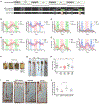
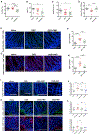

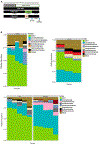
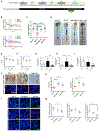
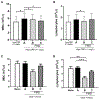
Similar articles
-
Intermittent administration of a fasting-mimicking diet reduces intestinal inflammation and promotes repair to ameliorate inflammatory bowel disease in mice.J Nutr Biochem. 2021 Oct;96:108785. doi: 10.1016/j.jnutbio.2021.108785. Epub 2021 Jun 1. J Nutr Biochem. 2021. PMID: 34087411
-
Spinal anesthesia alleviates dextran sodium sulfate-induced colitis by modulating the gut microbiota.World J Gastroenterol. 2022 Mar 28;28(12):1239-1256. doi: 10.3748/wjg.v28.i12.1239. World J Gastroenterol. 2022. PMID: 35431512 Free PMC article.
-
MSI2 deficiency in ILC3s attenuates DSS-induced colitis by affecting the intestinal microbiota.Front Immunol. 2023 Jan 12;13:963379. doi: 10.3389/fimmu.2022.963379. eCollection 2022. Front Immunol. 2023. PMID: 36713428 Free PMC article.
-
Extracellular vesicles-mediated interaction within intestinal microenvironment in inflammatory bowel disease.J Adv Res. 2021 Jul 8;37:221-233. doi: 10.1016/j.jare.2021.07.002. eCollection 2022 Mar. J Adv Res. 2021. PMID: 35499059 Free PMC article. Review.
-
Intestinal microbiota, fecal microbiota transplantation, and inflammatory bowel disease.Gut Microbes. 2017 May 4;8(3):238-252. doi: 10.1080/19490976.2017.1290757. Epub 2017 Feb 10. Gut Microbes. 2017. PMID: 28609251 Free PMC article. Review.
Cited by
-
Fasting-mimicking diet causes hepatic and blood markers changes indicating reduced biological age and disease risk.Nat Commun. 2024 Feb 20;15(1):1309. doi: 10.1038/s41467-024-45260-9. Nat Commun. 2024. PMID: 38378685 Free PMC article. Clinical Trial.
-
Fasting-Mimicking Diet Reduces Trimethylamine N-Oxide Levels and Improves Serum Biochemical Parameters in Healthy Volunteers.Nutrients. 2022 Mar 5;14(5):1093. doi: 10.3390/nu14051093. Nutrients. 2022. PMID: 35268068 Free PMC article.
-
Gut microbiota modulation as a possible mediating mechanism for fasting-induced alleviation of metabolic complications: a systematic review.Nutr Metab (Lond). 2021 Dec 14;18(1):105. doi: 10.1186/s12986-021-00635-3. Nutr Metab (Lond). 2021. PMID: 34906176 Free PMC article. Review.
-
Exosomes derived from 3D-cultured MSCs improve therapeutic effects in periodontitis and experimental colitis and restore the Th17 cell/Treg balance in inflamed periodontium.Int J Oral Sci. 2021 Dec 14;13(1):43. doi: 10.1038/s41368-021-00150-4. Int J Oral Sci. 2021. PMID: 34907166 Free PMC article.
-
Interaction between microbiota and immunity in health and disease.Cell Res. 2020 Jun;30(6):492-506. doi: 10.1038/s41422-020-0332-7. Epub 2020 May 20. Cell Res. 2020. PMID: 32433595 Free PMC article. Review.
References
-
- Barker N (2014). Adult intestinal stem cells: critical drivers of epithelial homeostasis and regeneration. Nat. Rev. Mol. Cell Biol. 15, 19–33. - PubMed
Publication types
MeSH terms
Grants and funding
LinkOut - more resources
Full Text Sources
Other Literature Sources

